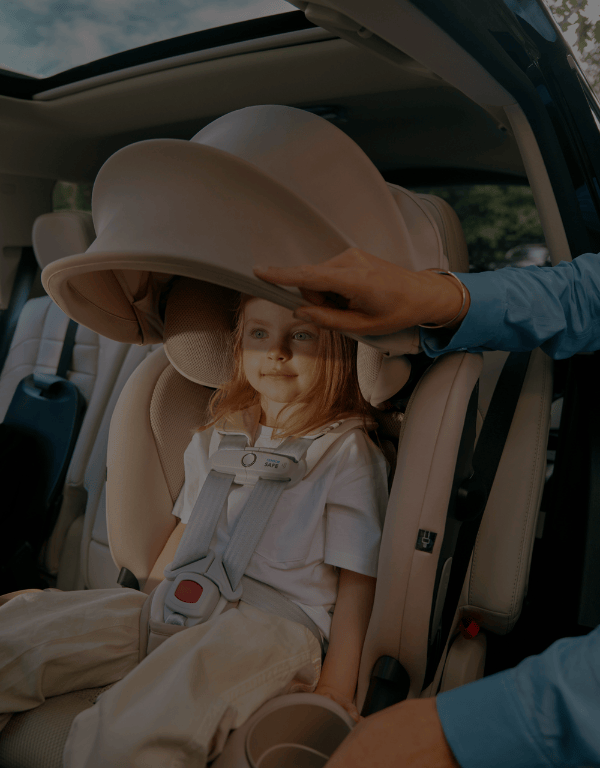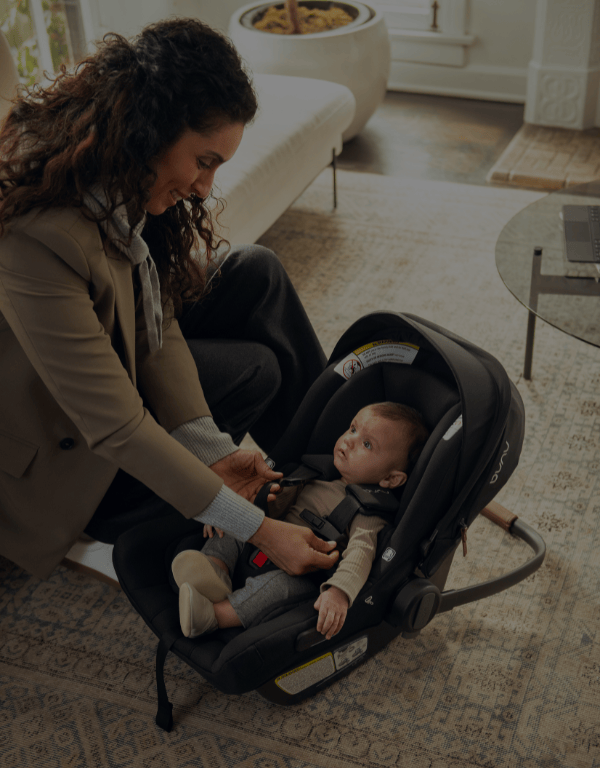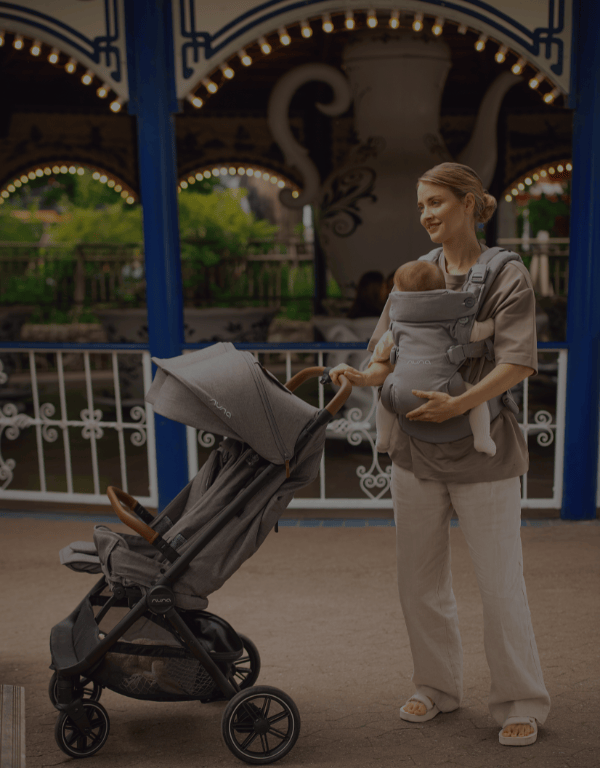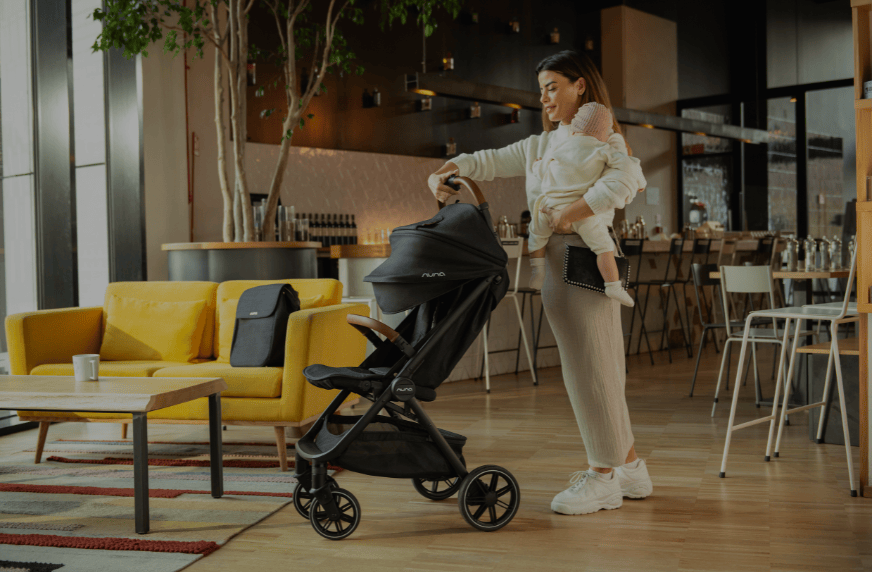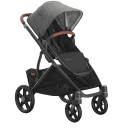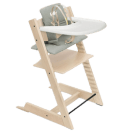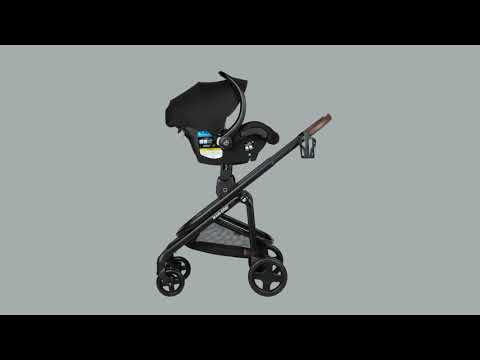
Selecting the Right Car Seat for Your Child
You’ll be buying a lot of stuff for your new baby, and many soon-to-be parents find that choosing a car seat is one of the more challenging ‘stuff’ decisions they make. Don’t get us wrong—it’s definitely a bigger (and more expensive!) deal than choosing a bandana bib—but there’s no reason to feel overwhelmed. We’ll break down how to choose a car seat by describing the major differences between car seat types, highlight practical pointers to consider while shopping, and give you the rundown on safety features that will lend you major peace of mind. You’ll be a pro in no time.
What are the different types of Car Seats?
Infant Car Seat

An infant car seat has been designed specifically for newborns and is generally outgrown by baby’s first birthday (depending upon your little one’s size and your car seat’s height and weight limits). They’re portable, lightweight, and can be used as part of a travel system—you can pop your car seat right onto a stroller frame and then back into the car, easy breezy (just be sure that your seat and stroller are compatible). Infant car seats are rear-facing at all times, which is safest for your baby.
Tips for Infant Car Seat Shopping
- Designed with newborns in mind, some models have a starting weight of just 4lbs. (with infant insert).
- Because babies under 6 months can’t sit up on their own, if you have a stroller that does not fully recline or come equipped with a carrycot/bassinet option, you’ll need to snap on your infant car seat (with adapters) for strolling with newborns.
- If your baby is snoozing, you can unclip and easily remove the whole car seat from the base without risking a naptime interruption.
- An infant car seat can be installed without its base using just a seat belt, so it’s a great option for planes, trains, and automobiles.
- During especially hot or cold weather, you can keep the car seat inside so it’s always a comfy temperature for your baby. Bonus: That means you can get your little one properly restrained while indoors before taking them outside and sweating (or shivering) your tush off.
- Because infant car seats have a limited time frame for usage, there are additional costs for starting with this seat and not a convertible car seat. That being said, an overwhelming majority of parents still register for an infant car seat.
Convertible Car Seat

A convertible car seat can be used rear-facing or forward-facing (hence the ‘convertible’), and unlike infant car seats, remain installed in your car without a detachable base. While they aren’t lightweight or portable, they do offer flexibility and longevity—many can be used from birth into childhood (typically around age 6, depending on the weight limit).
What is an All-in-One Car Seat?

While shopping for convertible car seats, you may come across what’s known as a combination car seat (some descriptors include 3-in-1, 4-in-1, or All-in-One). Like a standard convertible car seat, they can be used rear- or forward- facing, and then later with older children, as a booster (both high-back and backless, depending on the model).
Tips for Convertible Car Seat Shopping
- Many convertible car seats have a starting weight of 5lbs and go up to 65lbs, so parents will get a lot of use out of one product (combination car seats offer an even longer lifespan of usage—some have a weight limit up to 120lbs in booster mode).
- Although most first time parents do end up purchasing or registering for an infant car seat, there are plenty of great reasons to begin with a convertible: If you plan to babywear extensively rather than using a stroller; if you’d like to manage your baby budget and can imagine using that extra dough somewhere fun; if you’re pragmatic and minimalist as part of your lifestyle (hat’s off!).
- Convertible car seats are heavier and more cumbersome than infant car seats, and are not very portable if you are traveling with your baby or don’t have your own personal vehicle.
- The American Academy of Pediatrics (AAP) updated its recommendations for rear-facing car seats in 2018. Previously, the AAP had specified that children should remain rear-facing until at least age 2. Their new policy recommends children remain rear-facing as long as possible, until they reach the maximum height or weight limit for their specific car seat model.
Booster Car Seat

A booster car seat—either high-back or backless—bridges the gap for kiddos who have outgrown their convertible car seat, but aren’t yet big enough for the seat belt to fit properly. A booster raises a child up off the vehicle seat, creating a better seat belt fit. You’ll transition your child from a convertible car seat to a booster once he or she is at least 40 lbs., is at least 4 years old, and sits properly for the duration of the trip (no slouching over or fidgeting with the shoulder belt, for example). You’ll quit using it between ages 10 and 12 (as always, this will depend on your child’s size and your booster’s weight and height limits).
Tips for Booster Car Seat Shopping
- Backless booster seats are lightweight, inexpensive, and portable, so they’re ideal for travel and easy to store.
- High-back boosters with adjustable headrests will generally give the best positioning for the shoulder belt, and are better at keeping sleeping kiddos properly placed in seat belts than backless boosters. They’re also the better choice in cars without head restraints, like pickup trucks, or in vehicles with bench seating.
- Do not feel rushed into transitioning into a booster! Children – especially the younger ones – are safest in a 5-point harness, so if your little one still fits within the height and weight limits for his 5-point harness car seat, keep your child there.
Car Seats by Age
Your child’s weight, height, and age all play a role in determining when you should transition your kiddo into a different car seat or seating position. This chart gives a general outline of car seats by age (and keep in mind these recommendations are for typically developing children – you know your child best).

Car Seat Safety
Unsurprisingly, safety is the top concern of any parent shopping for a car seat. There are bonus safety features to look for—like extra side impact protection and load legs—but also keep in mind how the car seat you’re considering fits your family’s vehicle.
One of the most common questions we’re asked by parents-to-be is ‘which car seat is safest for my new baby?’ Fortunately, all new car seats must pass federal safety regulations set by the National Highway Traffic Safety Administration (NHTSA), so how you use your seat matters more than what you choose to buy. In other words:
What is the safest car seat?
The safest car seat is one that is the right size for your child’s weight, height and age; that fits your car; and that is properly installed each and every time.
Read more: How to Install a Car Seat
Car Seat Safety Features
There are some important safety features to always keep in mind as you shop for car seats, and don’t forget: If you plan to reuse a car seat with a new sibling, most seats expire in about 6 years. Look for an expiration date on the bottom of the car seat or in the manual, and make sure there has not been a product recall. If you’re in doubt, go ahead and purchase new.
5-Point Harness
- A 5-point harness consists of two shoulder straps, two waist straps, and a strap that comes up between the legs that all snap into a single middle buckle. It restricts movement and prevents your little one from wiggling their arms out or shifting into an unsafe position during car rides.
Side-Impact Protection
- 1 in 4 car accidents is a side impact collision. Generally, these kinds of crashes result in more serious injury, so look for a car seat that advertises side-impact protection. Keep in mind, however, that the NHTSA is currently researching how to test for side-impact protection, so no regulated standard has been set.
Ease of Harness Adjustment
- A properly-fitted shoulder harness makes a huge impact on the car seat’s overall safety for your little one. Some car seats offer a quick harness adjustment without rethread, which can cut down on user error. If you spot ‘no-rethread harness’ in the product description, you’ll know it’s super user friendly.
Load Leg
- A load leg is a metal support bar that unfolds from the base of an infant car seat, and rests on the floor of your car (they are height adjustable, so most vehicles can accommodate them). Like a top tether, they reduce forward momentum in a crash, and provide stability by absorbing energy during the collision. Not all infant car seat bases have a load leg, but in crash tests done by Consumer Reports, load legs reduced the risk of head injuries by almost half.
Anti-Rebound Bar
- In a collision, a car seat will move or rotate towards the point of impact. After the initial crash, the car seat will ‘rebound’ into your back seat. An anti-rebound bar reduces the movement of the car seat into your vehicle’s back seat, and any feature that minimizes motion during a crash also reduces opportunity for injury.
Recline Positions
- We are learning more and more about the relationship between proper recline angle in an infant car seat and respiratory health in young babies. Some car seats come with bases that allow for multiple recline positions, so not only is it easy to ensure that your newborn is reclining at an optimal angle, it’s also easy to get a super tight install in a wide variety of vehicles.
Bubble Indicator
- Car seats have an indicator to help you position the base at the correct level for proper seat positioning. Some have bubble level indicators (like you’d see in levels for hanging shelves) or color-coded recline angles, and they make it much easier to tell if you’ve positioned the base at the right angle.
Finding What’s Right for You
Albee Baby is the oldest family-owned specialty baby shop in the US, and we pride ourselves on providing our customers with the best assortment of baby products anywhere, at fair prices, always. We’re committed to being an inclusive resource for parents, and hope you’re feeling empowered to find the right baby gear for your family. Still have questions? Feel free to contact our baby gear experts at 877.692.5233 or by email at info@albeebaby.com.
 Car Seats
Car Seats
 Strollers
Strollers
 Travel Cribs & Playards
Travel Cribs & Playards
 High Chairs
High Chairs
 Cribs & Nursery
Cribs & Nursery
 Health & Safety
Health & Safety
 Gift Shop
Gift Shop
